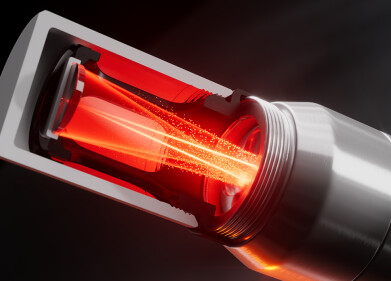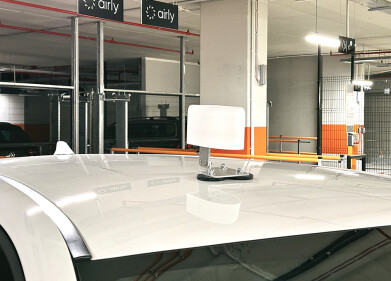Air Monitoring
London Mayor to install air quality monitors at hospitals
Apr 01 2019
Ten hospitals in the most polluted areas of London will be equipped with new air quality monitors to measure levels of toxic air and help protect patients and staff. Hospital patients, including young children and the elderly, are most vulnerable to the harmful health effects of air pollution, especially those suffering with respiratory conditions.
The air quality instruments will be supplied and installed by Air Monitors, one of the Breathe London partners. Air Monitors MD Jim Mills said: “Air quality improvement measures should be targeted to protect the most vulnerable people. Therefore, I’m delighted to be expanding the network of AQMesh pods to include hospital sites. Data from these locations will help to highlight pollution hotspots and ensure the solutions that our partners put in place are working.”
A recent study found 60 per cent of hospitals and NHS facilities in inner London are located in areas that exceed the legal limit for air quality pollutants*.
The Mayor’s new hospital monitors will support the NHS by providing real-time air quality measurements that will allow health professionals to take appropriate action to protect patients and employees – for example, warning patients about high pollution episodes and advising which hospital entrances have the lowest levels of pollution.
The first monitor is already up and running at St. Bartholomew’s Hospital, with others due to be installed shortly at the Trust’s other three hospitals The Royal London, Whipps Cross and Newham Hospitals, as well as at Great Ormond Street Hospital, the Royal Free Hospital, Guy’s Hospital and St Thomas’ Hospital and other NHS sites in London.
The monitors are part of Sadiq’s work to deliver the world’s most advanced and comprehensive network of air quality monitors in London to help investigate and improve London’s toxic air.
The Mayor of London, Sadiq Khan said: “Vulnerable hospital patients are more susceptible to the harmful effects of our toxic air pollution health crisis that harms lung growth and is linked to asthma, cancer and dementia. I am working with London’s leading hospitals to install air pollution monitors and help find new ways to reduce pollution and protect patients.
“I’m doing everything in my power to protect Londoners from polluted air including cleaning up our bus and taxi fleet, and establishing the largest air quality monitoring network of any major city. We are now counting down to the world’s first 24-hour seven-day-a-week Ultra Low Emission Zone in the central London congestion charge zone, which will help clean our air and reduce NOx road transport emissions in central London, including around many hospitals, by 45 per cent.”
The ULEZ will begin in central London on 8th April. The Mayor’s Breathe London project is using a range of more than 100 cutting-edge fixed and mobile sensors, including two dedicated Street View cars and backpacks for school children, to provide an unprecedented level of detail about London’s air quality crisis and deliver new insight into the sources of pollution. The new hospital monitors will help NHS staff to be better informed about air pollution, associated health risks and able to give vulnerable patients appropriate advice. Hospitals and NHS facilities will be able to measure the impact of measures they take to improve air quality (for example cleaning up their vehicle fleet or running no idling schemes). In addition, researchers can now use on site air pollution concentrations alongside patient records to better understand the relationship between air pollution and health effects
Great Ormond Street Hospital (GOSH) and Global Action Plan have published their new Clean Air Hospitals Framework and recommended installing air quality monitoring at NHS sites.
Matthew Shaw, Chief Executive of GOSH said, “Great Ormond Street Hospital (GOSH) is delighted to be supporting the Mayor’s Breathe London project. As a specialist children’s hospital, we see a number of patients in our hospital who are impacted by air quality. The ability to get real time air quality data will mean patients and staff will be able to make informed decisions about how they can help reduce their exposure to poor quality air. The project compliments delivery of the GOSH Clean Air Hospital Framework, a pioneering strategy aimed at creating a healthy environment for patients, staff and the surrounding community. We hope other hospitals will be inspired to adopt the Clean Air Hospital Framework so that patients and communities across the UK may benefit.”
Dr Penny Woods, Chief Executive of the British Lung Foundation, said: “Air pollution is a public health emergency – it can cause lung cancer, respiratory and heart disease and stunt the growth of children’s little lungs. So it’s not right patients - especially children, the elderly and those with heart and lung problems - are exposed to dirty air that may make their symptoms worse when going to hospital.
“It's fantastic to see the Mayor’s announcement to install air quality monitors at London’s most polluted hospitals; it will help to protect some of the most vulnerable people in the city. However, our research shows that across the UK, a quarter of hospitals and a third of GP surgeries are in areas exceeding safe limits of particulate pollution. We must now see the rest of the country start to follow London’s lead with ambitious plans such as a national system of air pollution alerts and clean air zones in our most polluted towns and cities.”
Nicky Philpott, Director of the UK Health Alliance on Climate Change (UKHACC) said: “Air pollution is a public health emergency. Estimates of the mortality burden are as high as 40,000 deaths per year and by 2035 the health and social care costs of air pollution have been estimated to be £18.6 billion. The UK Health Alliance on Climate Change, representing over 650,000 health care professionals, support efforts to both monitor and reduce air pollution, this is especially important around hospitals, both because the people visiting them are often the most vulnerable to poor air quality, but also because this is the workplace of our doctors, nurses and other health professionals.“
Chris Large, Senior Partner at Global Action Plan said, “Every year, millions of the most poorly Londoners visit hospitals that are sadly located in air pollution hotspots. Monitoring the peaks in pollutants is an incredibly important tool to help hospitals identify, and tackle the activity that causes dangerous pollution levels to accumulate.”
Digital Edition
AET 28.3 September 2024
September 2024
Business News - ENVEA announces acquisition of APAQ Group - SICK and Endress+Hauser sign strategic partnership - Efforts to curb gas flaring intensify amid environmental concerns Air Monito...
View all digital editions
Events
Nov 05 2024 Toronto, Canada
Nov 05 2024 Rimini, Italy
Nov 06 2024 Ho Chi Minh City, Vietnam
Nov 12 2024 Tel Aviv, Israel
Nov 12 2024 Valencia, Spain



















